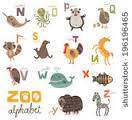Hi!
Finding reliable teaching resources starts to become a dilemma. There are so many programs and apps to choose from, but finding the one that suits your needs and class is more difficult than ever. It seems that the only way to find something educational and reliable is to either trust the judgement of those who recommend a resource or simple just try it out yourself.
For me, an app or program has to give me the ability to collaborate and communicate with my students, yet at the same time provides me with updated materials. Just recently I was recommended a program named På Riktigt (https://upplev.pariktigt.com/login). It is an interactive program where you can collaborate, communicate and hold lectures together with your students. As a teacher you need to have an account in order to be able to invite the students to the program.
Here's how it works:
You create an account as a teacher using your provided school e-mail address. Once your e-mail has been verified, you receive a specific code that you later use during the creation of your personal account. When your account is finished and verified, you're then able to browse through the different ''lärcirkel'' (activity circle) for all subjects. Once you've decided on a subject and chosen an activity, you then invite in your class. The activities vary in hours, depending on what subject you want to teach or focus on.

This is one of the examples of the many activity circles that På Riktigt offers. Students start at the starting point and with pop-up instructions, videos, information, games and tasks and projects, they work their way through the map. They can either work separately on their own individual Ipads or computers, in groups or together as a class. Teachers can choose as many subjects or activity circles for the class to do. While the circle is active, teachers can track every students individual work.
When the student is finished with all the different tasks, the teacher receives a notification beside the students' name. The projects and tasks can be corrected and graded, which the student then receives through a private message. Students can always go back and correct their works. The circle does not allow a student to jump over a task or activity, so no cheating or laziness! If a circle is not completed, the teacher will receive a notification, thus providing the appropriate help for both the student and teacher on which task/activity the student is struggling with.
Another useful feature that this program contains, is the syllabus for every major subject. For every circle you choose, it provides the specific curriculum. I believe it is a very useful feature because it not only helps the teacher focus on the subject, but helps provide a grading basis that can later be used for assessments. It is also practical for the students to be reminded of the curriculum and can assess themselves.
The only downside to this program is that it is fairly new and there aren't so many activity circles to cover every major subjects' area. The circles are created by either other teachers or the actual creators of the program. So if you yourself think that you can provide an activity circle that can benefit others, you can create and share it with the other members and students. For the time being, there is still a descent amount of circles to go around. I myself have not yet create my own circle, but it is something I am looking forward to doing.
Even as a beginner within this program, I find it very easy to use and puzzle my way around. We have only yet tried it amongst ourselves (teachers), so we are looking forward to sharing it with our students! Feedbacks will be collected and sent to the creators of the program. I know that the program is educational, but the fact that it is very easy to use, even for someone who has no interest for apps and programs, it is just the icing on the cake! I don't usually recommend apps and programs, but this is an exception! Try it and leave a feedback! Good luck... På riktigt!






 Det engelska språket omger oss alltmer i vardagen. Spela dessa engelskaspel så att du kan, vågar och vill använda engelska i olika situationer. Här har vi samlat alla spel inom ämnet Engelska. Spelen passar förskolan, grundskolan och ändå upp till gymnasiet. Sortera på hur populär spelen är, hur nya de är eller efter namn.
Det engelska språket omger oss alltmer i vardagen. Spela dessa engelskaspel så att du kan, vågar och vill använda engelska i olika situationer. Här har vi samlat alla spel inom ämnet Engelska. Spelen passar förskolan, grundskolan och ändå upp till gymnasiet. Sortera på hur populär spelen är, hur nya de är eller efter namn.










